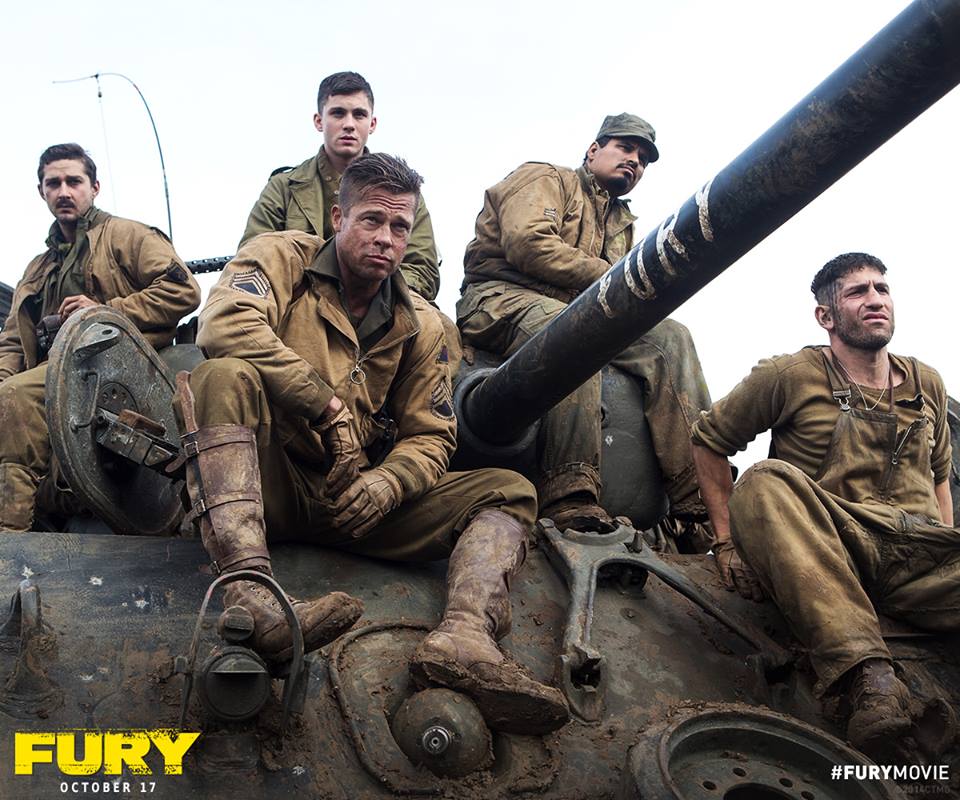Throw out the old, cliche and incorrect World War II movies of the past and grab a ticket to “Fury.” This movie, starring Brad Pitt and Logan Lerman, is the most accurate and engrossing war movie of 2014.
The movie is set in April of 1945, right as the Allies’ army was making the final push to defeat Nazi Germany.
The first introduction to the crew of Fury took place in a heavy duty tank. Presented is a squad of four who had just lost their machine gun operator, whose body is shown gruesomely dead.
Brad Pitt plays Sergeant Collier, with actors Shia LaBeouf, Michael Peña, and Jon Bernthal playing the squadron.
The boys are heading back to camp after the rest of their platoon was demolished. When the camp is reached is when a new soldier named Norman (Logan Lerman), is assigned to the tank’s squad. The team seems highly displeased with the assignment, as they see him as weak and useless.
Part of the reason this movie is so poignant is the accurate portrayal of the fear within the soldiers, along with the desensitization that is required to survive in the brutal warfare.
One of the crucial scenes that depicts this is early on in the movie. Norman is thrown into his first battle is his first bitter taste of the destruction of war.
During this battle, Norman has a mental breakdown because he isn’t able to operate the machine gun fast enough or accurately, so the squadron continuously screams at him until the fight is over.
Once the fight is over, Norman sobs that he can’t do it anymore and he can’t kill people. At this point, the Sergeant pulls him toward a captured German soldier, who was sobbing and begging not to kill him while holding a picture of his wife and child.
The Sergeant physically forces him to shoot the captive in the back while screaming “do your job” at Norman.
This shows the brutal mindset the soldiers were forced to adopt, and the dehumanization not only of the enemy soldiers but the forced self-desensitization of the U.S. soldiers in order to salvage what little sanity they can cling on to.
Another accurate depiction of war is shown when the soldiers are fighting from their tank and they realize they are fighting children.
Norman has another mental breakdown when forced to gun down enemy children because they had set one of the other tanks on fire; he also had to watch on of his fellow soldiers catch on fire and shoot himself in the head to stop the pain.
Once they reach the town in the center of this fight, they see children hung up on buildings by their necks with signs that say they were cowards who wouldn’t serve for the German army.
Although these images could be considered traumatizing, “Fury” delivers an aspect of war that is commonly looked over.
The fight spreads to every inch of the country, including many children casualties. Most war movies depict the main character as war hero who save the day from the dehumanized, inherently evil enemy.
That wasn’t the case in history, and Fury shows the enemy is really the leaders who are forcing the children to fight.
However, the real enemy pays very little consequence, while the frightened soldiers who were forced into the fight pay the biggest price.
While the audience follows Norman’s path from a normal clerk to a killing machine, they see the real effects of war, not the romanticized, stereotypical hero that one often sees in this type of film.
By the end of his journey, Norman is not an acclaimed hero, he is a traumatized boy who had to kill or be killed, and lost almost every connection with humanity he made along the way.
What he lost will never be returned to him, and he will never be able to return to his innocent, clear, Christian mindset again.
“Fury’s” intense depiction of warfare is chilling but reminds the audience of the destructive truth about war.





![[Both photos courtesy of sonoma.edu]
Ming-Ting Mike Lee stepped in as the new SSU president following Sakakis resignation in July 2022](https://sonomastatestar.com/wp-content/uploads/2024/04/CC4520AB-22A7-41B2-9F6F-2A2D5F76A28C-1200x1200.jpeg)



























